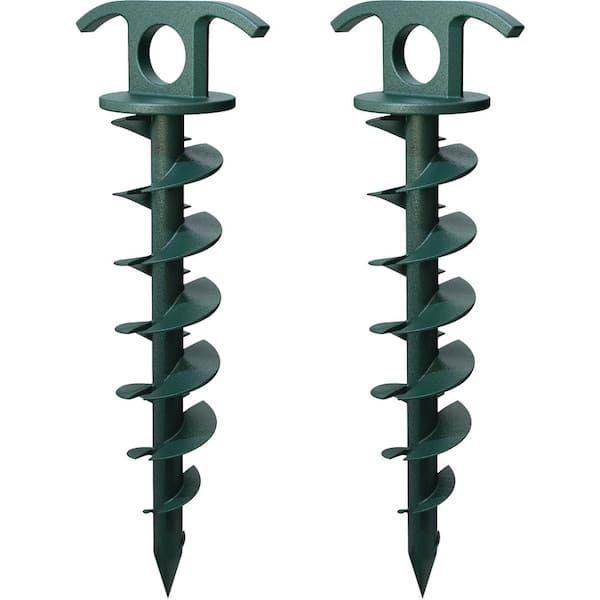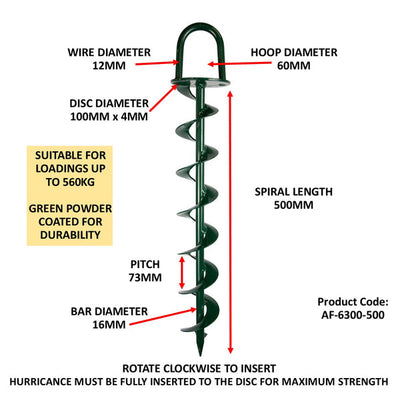Analyzing Various Ground Anchor Models to Discover the Perfect Fit for Secure Installation
Analyzing Various Ground Anchor Models to Discover the Perfect Fit for Secure Installation
Blog Article
Explore the Different Kinds Of Ground Support for Your Following Task
From auger anchors, which stand out in diverse dirt problems, to risk supports designed for short-term installations, the alternatives are numerous. Additionally, concrete and screw anchors existing unique benefits in particular scenarios, while deadman anchors are customized for applications calling for resistance to lateral pressures.

Auger Anchors
Auger supports are a popular option in numerous construction and landscaping jobs due to their unique layout and effective securing capacities. These anchors include a helical screw-like shaft that is driven right into the ground, enabling a safe and secure hold. The spiral layout promotes very easy installation and optimizes resistance versus lateral pressures, making auger anchors especially effective in applications such as fencing, momentary frameworks, and erosion control.
The setup procedure of auger anchors is relatively straightforward. Auger supports can be easily removed and reused, which adds to their cost-effectiveness and sustainability.
Among the substantial benefits of auger anchors is their capacity to distribute tons evenly across the bordering soil, reducing the risk of dirt disruption and decreasing environmental impact. Furthermore, they are less prone to heaving or loosening with time contrasted to typical anchoring approaches. Subsequently, auger anchors are an outstanding selection for projects needing resilient and trustworthy anchoring solutions.

Risk Anchors
When it comes to safeguarding frameworks in a selection of outdoor applications, risk supports supply a trusted and straightforward solution. These anchors are commonly created from durable materials such as steel or aluminum, created to hold up against ecological stress and anxieties while giving optimal stability. Their easy style permits for fast installation, making them an ideal option for short-lived or permanent anchoring needs.
Risk supports are particularly useful in protecting tents, covers, and various other lightweight structures versus wind and weather. They operate by being driven right into the ground at an angle, producing a strong hold that withstands pull-out forces - Ground Anchor. The performance of risk supports relies on numerous variables, including dirt type, wetness content, and the angle of setup
For added safety and security, lots of stake anchors come with add-on points for ropes or bands, enabling tension changes as necessary. In applications such as landscape design or building and construction, they can effectively support tools or frameworks on unequal terrain. Overall, stake supports offer a economical and functional solution for protecting numerous outside installments, making them a recommended choice for contractors and DIY fanatics alike.
Concrete Anchors
Concrete supports give a durable option for securing frameworks to concrete surface areas, guaranteeing security and security in different applications. These anchors are necessary for tasks varying from residential building and constructions to large industrial setups. They are available in various kinds, consisting of growth supports, glue supports, and undercut supports, each designed for specific lots requirements and ecological conditions.
Sticky anchors make use of high-strength epoxy or material to bond the support to the concrete, offering remarkable read more load-bearing capacities, particularly in fractured concrete situations. Undercut supports create a special shape within the concrete, offering phenomenal holding power, specifically in applications where tensile lots are widespread.
Picking the ideal concrete anchor includes taking into consideration variables such as the weight of the lots, the problem of the concrete, and environmental problems. Correct setup methods are vital to make certain ideal performance and integrity. When carried out properly, concrete anchors significantly boost the architectural integrity of numerous tasks, making them indispensable in modern building methods. Understanding the details needs of your job will certainly assist in picking the best sort of concrete anchor for the job.
Screw Anchors

Screw supports are a functional securing service that can be successfully used in a range of applications where standard concrete anchors might not be enough. These supports consist of a helical design that allows them to be conveniently driven into the ground, making them suitable for use in soil and various other substratums. Their special framework provides exceptional holding power and resistance to pull-out forces, making them suitable for countless tasks, from landscape design to structural assistance.
Among the main advantages of screw supports is their ease of installment. They require marginal devices and can often be mounted without the requirement for excavation, which conserves both time and labor expenses. In addition, screw anchors can be gotten rid of and reused, providing a sustainable remedy for temporary applications.
Screw supports are particularly beneficial in areas where soil conditions are testing, such as sandy or loosened dirts. Their ability to be set up at varying depths enables modification based on particular project needs. Generally, screw supports give a dependable and efficient anchoring method, making them an exceptional selection for specialists and designers seeking reliable remedies for their tasks.
Deadman Anchors
Deadman anchors work as a robust service for stabilizing structures in difficult problems, specifically where conventional anchoring methods might fail. These supports contain large, hefty items buried underground, which produce resistance against side pressures. The style typically includes a horizontal component, such as a block of concrete or a metal plate, hidden in the soil, to which cable televisions or straps are attached.
The performance of sites deadman supports exists in their capacity to disperse tons over a bigger area, minimizing the danger of failure in unsteady soil problems. They are especially beneficial in click to investigate applications such as retaining wall surfaces, short-lived frameworks, and incline stabilization, where dirt activity can endanger the integrity of the framework.
Installation of deadman anchors calls for mindful preparation to ensure they are placed at the correct deepness and positioning, optimizing their load-bearing capacity. While they might need more labor and product than lightweight anchors, their reliability in unfavorable conditions makes them very useful for lasting jobs. Deadman supports are flexible and can be adjusted to numerous applications, making them a go-to option for engineers encountering special difficulties in their tasks.
Verdict
In summary, picking the suitable kind of ground support is vital for guaranteeing security and safety in numerous jobs. Auger anchors stand out in diverse soil conditions, while stake supports fit momentary applications. For concrete surfaces, development and sticky anchors offer dependable choices, and screw supports use adaptability in difficult surfaces. Deadman supports are specifically reliable in standing up to lateral pressures for maintaining walls. Mindful factor to consider of these options will certainly boost job outcomes and architectural stability.
Furthermore, concrete and screw supports existing unique benefits in specific circumstances, while deadman supports are customized for applications calling for resistance to side forces - Ground Anchor.Auger anchors are a preferred choice in numerous building and landscape design jobs due to their distinct layout and reliable securing capacities. They come in various kinds, including development anchors, adhesive supports, and undercut supports, each designed for particular lots requirements and environmental conditions
Glue supports utilize high-strength epoxy or resin to bond the anchor to the concrete, providing exceptional load-bearing abilities, especially in broken concrete situations. Generally, screw supports supply a efficient and reliable securing approach, making them an excellent selection for contractors and designers seeking reliable solutions for their tasks.
Report this page